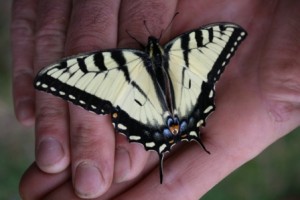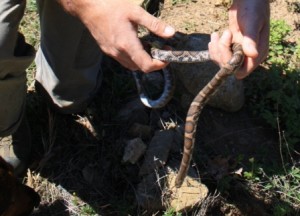Buzzing and burrowing, flowering and fluttering
There were several exciting additions and encounters on the farm over this past week.
We met our first snake of the season. A lovely little herp that we believe to be a milk snake, here is a link to more information on this useful little snake. It’s colors are a bit dim and eyes are milky as this snake is about to shed it’s skin.
Another 18 blueberry bushes went into the blueberry grove yesterday on a cool overcast day perfect for transplanting. A wonderful Robert Frost poem about blueberries was running through my head all morning.
And perhaps the thing I am most excited about, our pollinators have moved in! A colony of Italian bees was installed in its new hive by Steve and me this past Friday.
 Bees in their delivery package
Bees in their delivery package
 Prepared beekeeper (or Darth Steve as Phil can’t seem to stop calling this picture:)
Prepared beekeeper (or Darth Steve as Phil can’t seem to stop calling this picture:)
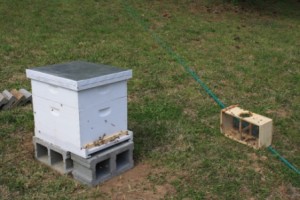 The finished hive and the package they came in so the last few can finish flying out
The finished hive and the package they came in so the last few can finish flying out
At last check they appear to be doing fine and eating well. It’s unlikely that we will be able to harvest any honey from them until next year but it is certainly already fun and fascinating to be observing their busy lives.
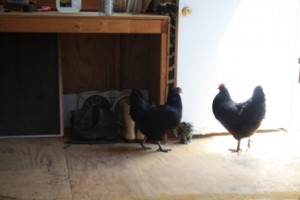 The girls come into the farm office to say hello
The girls come into the farm office to say hello
We also discovered another tiny flyer active on the farm, this little wren nest is tucked away in our garage.
Our chickens are also settling into their new home nicely and all hens are laying regularly. Currently we have 2 black Australorps, 4 gold-laced Wyandotte pullets, a bantam Serama hen and rooster, 1 black breasted red Old English game bird, 1 Ameraucana, and 2 Olive eggers. The Australorps are an Australian breed known for their size and consistent laying. Wyandottes are an American breed dating from 1870 and the Seramas are a Southeast Asian breed. Game birds are a very old English breed that is thought to be the origin of many other newer breeds. Our Ameraucana is a mix breed originating from South America and is the one giving us our blue eggs and she is also the mother of our Olive eggers. Olive eggers is a new term being used to refer to birds that are the offspring of a blue egg laying breed and a dark brown egg laying breed that will give you lovely olive colored eggs! We currently have more Olive egger eggs incubating in our
newly constructed incubator.
This was made from the following materials: 1 old ice chest, 1 glass section for viewing, two dish sponges, 1 pie pan, 1 piece PVC pipe, 1 hygrometer/thermometer, 1 40 watt light bulb and assembly, 1 hot water heater thermostat, 1 12 volt AC/DC converter, 1 fan from an old PC computer, and 1 camping egg holder. The eggs were set today; for the next 18 days they will be held at a temperature between 99oF-1020F with 60% humidity and turned regularly. On day 18 rotating will cease and humidity will be raised to 80%. Then finally on day 21 we will hope to start seeing little pips!
We also were treated to finding several more local plants putting on a show.
 Largeflower bellwort (Uvularia grandiflora)
Largeflower bellwort (Uvularia grandiflora)
 Squaw or cancer root (Conopholis americana) a parasitic plant
Squaw or cancer root (Conopholis americana) a parasitic plant
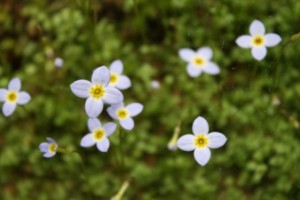 Pretty purple moss flower, what could it’s name be?
Pretty purple moss flower, what could it’s name be?
 Swallowtail on flowering almond
Swallowtail on flowering almond
 Foam flower (Tiarella cordifolia)
Foam flower (Tiarella cordifolia)
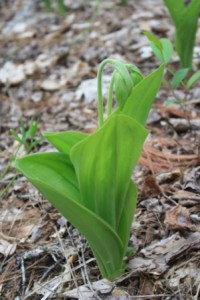 Lady slipper orchid about to bloom!
Lady slipper orchid about to bloom!
 Jack-in-the-pulpit (Arisaema triphyllum)
Jack-in-the-pulpit (Arisaema triphyllum)
And I would like to end today by saying we are ever thankful for long slow soaking rains! 